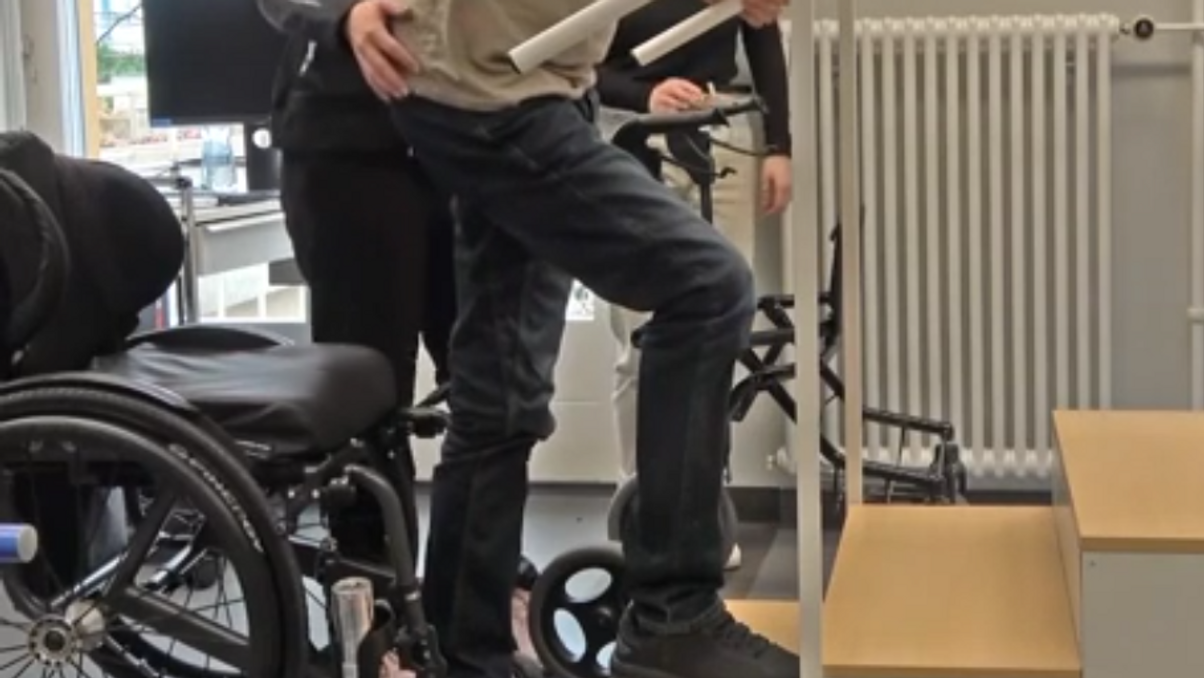Bluetooth Made It Possible For This Paralyzed Man To Walk Again
The experimental surgery could be a game-changer for patients around the world. Screenshot/Associated Press
Screenshot/Associated Press
News that is entertaining to read
Subscribe for free to get more stories like this directly to your inboxEven if you frequently use Bluetooth with your wireless headphones or to make calls while you’re in the car, you might not know some of the truly incredible things this technology can do.
For one 40-year-old who became paralyzed in a cycling accident 12 years ago, Bluetooth has given him the ability to stand, walk, and even climb stairs again.
An experimental surgery
A team of surgeons and neuroscientists in Switzerland recently conducted the procedure on Gert-Jan Oskam, following a complex but straightforward procedure.
By placing electrodes in his brain and on his spinal cord, the Bluetooth device was able to send and receive instructions that allowed him to move parts of his body that had been paralyzed for more than a decade.
“Within 5 to 10 minutes I could control my hips like the brain implant picked up what I was doing with my hips,” he said. “So that was like, yeah, the best outcome.”
Oskam is clearly appreciative of the team that gave him his newfound mobility, and the experts behind this process are now focused on delivering similar results to others around the world.
Big plans for the future
As neurosurgeon Jocelyne Bloch explained, the results are quick … but not immediate.
“So when everything is installed, the patient has first to learn how to work with his brain signals and we also have to learn how to correlate these brain signals to the spinal cord stimulation,” she said.
It sounds hard, but she said the process is “pretty short,” adding: “In a few sessions, everything is linked and the patient starts training.”
While the promising technique used in Oskam’s case involved invasive surgery, researchers are hoping to make the devices even smaller so they can be worn rather than inserted.
 Why Is The Aging Voyager 1 Probe Sending Back Incoherent Communications?
It's been speaking gibberish for a few months and officials are concerned.
Why Is The Aging Voyager 1 Probe Sending Back Incoherent Communications?
It's been speaking gibberish for a few months and officials are concerned. One Woman’s Massive Donation Is Wiping Out Tuition At This Medical School
Her inheritance came with the instruction to do "whatever you think is right."
One Woman’s Massive Donation Is Wiping Out Tuition At This Medical School
Her inheritance came with the instruction to do "whatever you think is right." Woman’s Pets Will Inherit Her Multimillion-Dollar Fortune, Not Her Kids
It's not the first time four-legged heirs were named in a will.
Woman’s Pets Will Inherit Her Multimillion-Dollar Fortune, Not Her Kids
It's not the first time four-legged heirs were named in a will.